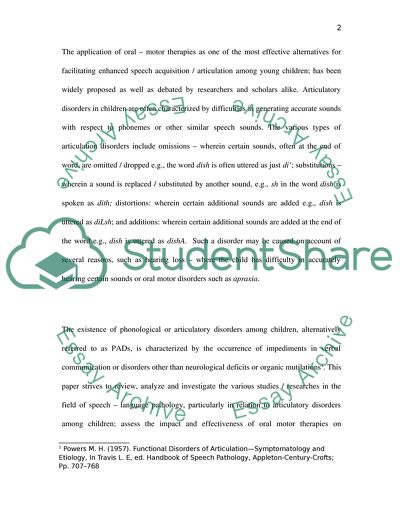Cite this document
(“Oral Motor Therapy Helps Improve Articulation Disorders in Children Thesis”, n.d.)
Oral Motor Therapy Helps Improve Articulation Disorders in Children Thesis. Retrieved from https://studentshare.org/health-sciences-medicine/1724723-oral-motor-therapy-helps-improve-articulation-disorders-in-children
Oral Motor Therapy Helps Improve Articulation Disorders in Children Thesis. Retrieved from https://studentshare.org/health-sciences-medicine/1724723-oral-motor-therapy-helps-improve-articulation-disorders-in-children
(Oral Motor Therapy Helps Improve Articulation Disorders in Children Thesis)
Oral Motor Therapy Helps Improve Articulation Disorders in Children Thesis. https://studentshare.org/health-sciences-medicine/1724723-oral-motor-therapy-helps-improve-articulation-disorders-in-children.
Oral Motor Therapy Helps Improve Articulation Disorders in Children Thesis. https://studentshare.org/health-sciences-medicine/1724723-oral-motor-therapy-helps-improve-articulation-disorders-in-children.
“Oral Motor Therapy Helps Improve Articulation Disorders in Children Thesis”, n.d. https://studentshare.org/health-sciences-medicine/1724723-oral-motor-therapy-helps-improve-articulation-disorders-in-children.


